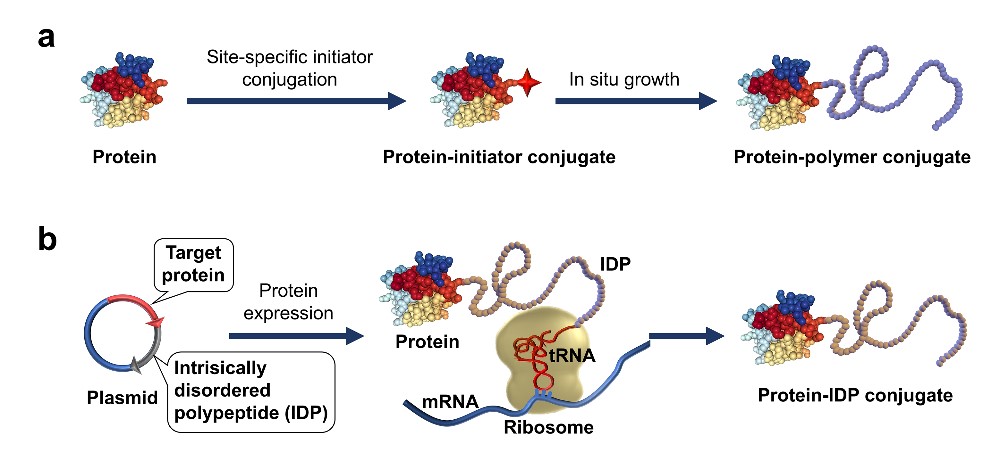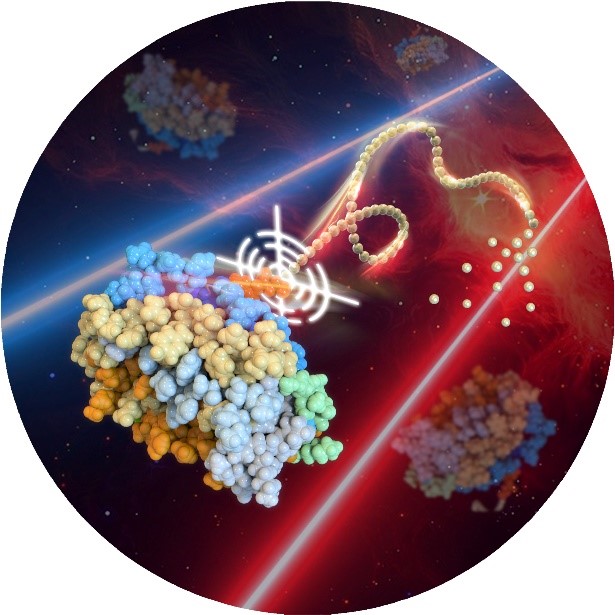Peking University, June 10, 2020: Recently, Professor Gao Weiping, a principle investigator in the Department of Biomedical Engineering at Peking University was invited to publish a review paper entitled "Precision Conjugation: An Emerging Tool for Generating Protein-Polymer Conjugates" in the top international journal Angewandte Chemie International Edition in the field of chemistry and materials.
In recent years, protein drugs have attracted more and more attention due to their high activity and high specificity. For example, in 2018, 8 of the top 10 best-selling drugs were protein drugs. However, there are still some problems that need to be solved as a drug, such as: (1) the stability of protein is poor, and it is easy to agglomerate, degrade or denature in the process of storage, transportation and use; (2) the in vivo half-life of protein is short, which requires frequent administration accompanied with side-effect and poor compliance of patients; (3) the potential immunogenicity of protein leads to the reduction of efficacy; (4) current protein drugs cannot aim to intracellular targets. These problems restrict the popular application of protein in clinic.
Schematic diagram of precise conjugation of protein-polymer conjugates
Protein-polymer conjugates is a common tool to solve these problems of proteins. It combines the biological activity of protein and the multifunctionality and flexibility of polymer. Therefore, it has been widely used in a series of biomedical fields, including drug delivery and disease diagnosis. At present, 16 protein-polymer conjugates have been approved as drugs. However, the traditional technology of protein-polymer conjugates, such as PEGylation, still has some unavoidable defects, such as: (1) there are many amino, carboxyl, hydroxyl and other reactive groups randomly distributing on the surface of protein, which is difficult to modify site-specifically, resulting in the mixture of isomers and reduction of protein bioactivity; (2) the steric hindrance effect between protein and polyethylene glycol results in the low efficiency of PEGylation; (3) polyethylene glycol is a kind of inert water-soluble polymer with simple structure and function, which is difficult to meet the complex demand of biomedicine, such as biodegradability, responsibility and self-assembly; (4) the potential immunogenicity of polyethylene glycol may affect it clinical efficacy; (5) polyethylene glycol cannot be biodegraded, which may lead to bioaccumulation in vivo.

The main processes of two precise conjugation methods: (a) in situ growth; (b) intrinsic disordered polypeptide fusion
Based on the research accumulation in this field for nearly ten years, in this review, they put forward the new concept of "precise conjugation of protein-polymer conjugates”, to describe the development prospect of the next generation of protein-polymer conjugates, which is more controllable, more efficient and customizable. In describing this concept, this paper focuses on two commonly used methods, namely, site-specific in situ growth (SIG) and intrinsic disordered polypeptide fusion (IPF). Starting from the scientific principle, the development history, preparation route and specific application of the two methods are summarized, and the advantages and differences between them are compared and discussed fully. Finally, the paper further discusses the challenges, and points out the broad prospects and development directions in the future.
Professor Gao Weiping is the corresponding author of this paper, and postdoc Liu Xinyu is the first author. The research work was supported by key projects of NSFC and China Postdoctoral Science Foundation.
The paper can be accessed at

